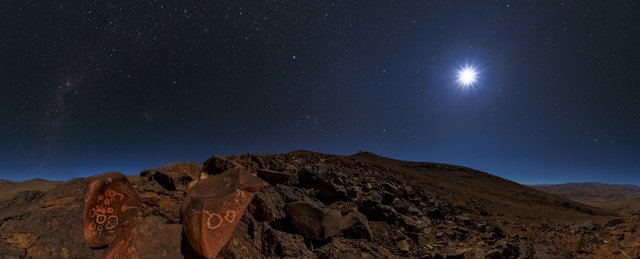Astronomers working at ESO observatories can now often be found in the Atakam desert. But they were not the first to begin to live on these waterless and inhospitable spaces. Once there was much more precipitation here and the flora of these places was more diverse. On these lands, several human civilizations have changed: the culture of El Molle (700-800). BC, Las Animas (Las Ánimas, 800-1200 AD) and Diaguita (Diaguita, from 1200 AD to the middle of the XV century). After they were conquered by the Peruvian Incas in the 15th century, the Inca and Diaghit cultures merged. This continued until the devastating conquest of South America by the Spaniards in 1530, which put an end to the ancient Aboriginal realms in Atacama. Traces of the distant past can be found everywhere around the ESO La Silla Observatory. There and here there are stones covered with a thousand-year old images - petroglyphs - remaining, apparently, from the eras of El Mollet. Some of these paintings depict people and animals, usually lamas, but for the most part abstract geometric figures are drawn there, including rectangles, labyrinthine interlacing of lines, circles and rays. Two sample patterns of the last type and are shown on our Photo of the Week by ESO. These two stones were found in one of the richest concentrations of petroglyphs, located near the 3.6-meter ESO telescope - in the photo it is visible on the top of the mountain. The photo was taken by the photo-ambassador of ESO Babak Tafreshi (Babak Tafreshi). An article about the various petroglyphs found around La Silla is published in the quarterly magazine ESO The Messenger (https://goo.gl/9uWKtI) based on the detailed photographic and topographic survey of rock paintings performed in 1990. 
Authors get paid when people like you upvote their post.
If you enjoyed what you read here, create your account today and start earning FREE STEEM!
If you enjoyed what you read here, create your account today and start earning FREE STEEM!